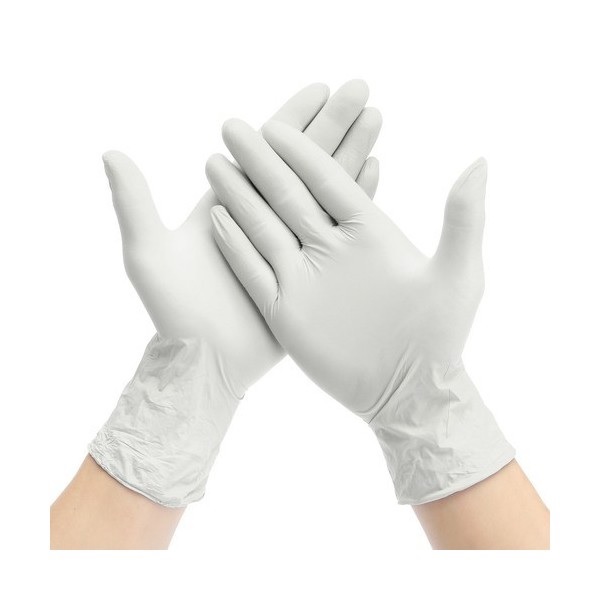Introduction: Hand Gloves
Hand gloves are more than just a fashion accessory; they play a crucial role in protecting our hands in various situations. From keeping our hands warm during the chilly winter months to safeguarding them from hazards in professional settings, gloves come in a variety of types, materials, and styles, each designed to serve a specific purpose. In this guide, we’ll explore different types of gloves, their uses, the materials they’re made from, and essential tips for choosing the right pair for your needs.
Table of Contents
Types of Hand Gloves and Their Uses
Hand gloves come in various types, each suited to particular tasks and environments. Understanding the primary categories will help you select the best option for your specific needs.
1. Winter Gloves
Winter gloves are designed to protect hands from the cold. They are made of insulating materials that trap body heat while keeping cold air out. These gloves are perfect for outdoor activities in cold weather, such as skiing, snowboarding, and general winter wear.
- Materials Used: Wool, fleece, and Thinsulate.
- Features: Water-resistance, windproofing, and thermal insulation.
2. Work Gloves
Work gloves are essential in industries such as construction, agriculture, and manufacturing. They protect hands from injuries caused by heavy machinery, chemicals, or abrasive materials.
- Materials Used: Leather, nitrile, rubber, and synthetic materials.
- Features: Cut-resistance, abrasion-resistance, and enhanced grip.
3. Gardening Gloves
Gardening gloves are used to protect hands from dirt, thorns, and other sharp objects while gardening. They provide a balance between durability and comfort.
- Materials Used: Cotton, rubber, and synthetic blends.
- Features: Waterproofing, flexibility, and thorn-resistance.
4. Medical Gloves
Medical gloves are designed for healthcare professionals to prevent the spread of germs and protect against exposure to bodily fluids. These gloves are disposable and come in various materials suitable for different medical settings.
- Materials Used: Latex, nitrile, and vinyl.
- Features: Powder-free, puncture-resistance, and hypoallergenic options.
5. Tactical and Military Gloves
These gloves are designed for extreme conditions, providing protection and enhanced grip in situations that require quick reflexes and high precision. They are common in law enforcement, military operations, and adventure sports.
- Materials Used: Kevlar, leather, and synthetic blends.
- Features: Cut-resistance, high dexterity, and shock absorption.
Factors to Consider When Choosing Hand Gloves
Selecting the right gloves depends on various factors, including intended use, material, and durability. Here are some key considerations to keep in mind.
1. Purpose and Activity
The activity for which you need gloves is the most critical factor in your choice. A pair of winter gloves won’t offer the protection needed for handling chemicals, and vice versa. Determine the primary purpose, whether for warmth, safety, or comfort, and choose accordingly.
2. Material
Different glove materials offer unique benefits:
- Leather: Durable and resistant to abrasion; commonly used in work gloves.
- Nitrile: Chemical-resistant and ideal for medical or lab work.
- Cotton: Breathable and comfortable, suitable for lightweight tasks.
- Wool and Fleece: Excellent insulation for cold weather.
3. Fit and Comfort
A glove that doesn’t fit well won’t provide optimal performance. Gloves that are too tight can limit movement, while loose gloves may lead to slipping and reduced dexterity. For specific tasks, it’s essential to ensure a snug fit.
4. Dexterity and Grip
For tasks requiring precision, such as assembly work or medical procedures, look for gloves that offer high dexterity. Enhanced grip, especially in wet conditions, is vital for gardening and certain work environments.
Materials Used in Hand Gloves and Their Benefits
Understanding the materials commonly used in glove manufacturing helps in choosing a pair that will be comfortable and effective for the task.
1. Leather
Leather gloves are popular for their durability and protection. They are resistant to abrasion and provide a good grip, making them ideal for construction, welding, and heavy-duty tasks.
- Pros: Durable, abrasion-resistant, and good grip.
- Cons: Not ideal for wet conditions, may cause discomfort in extreme heat.
2. Latex
Latex gloves are often used in healthcare due to their flexibility and close fit. They offer excellent dexterity and are commonly used in medical and laboratory settings.
- Pros: High dexterity, form-fitting, and affordable.
- Cons: Allergies to latex are common, not highly chemical-resistant.
3. Nitrile
Nitrile gloves are puncture-resistant and provide chemical protection, making them a preferred choice for medical and industrial applications where exposure to harmful substances is likely.
- Pros: Puncture-resistant, chemical-resistant, and hypoallergenic.
- Cons: Less tactile sensitivity than latex.
4. Wool
Wool gloves are perfect for insulation and warmth, making them ideal for winter gloves. Wool fibers trap heat and wick moisture away from the skin, providing comfort in cold weather.
- Pros: Excellent insulation, moisture-wicking, and breathable.
- Cons: Not waterproof, less durable than synthetic options.
Protective Features to Look for in Gloves
Depending on the specific requirements of the task, certain protective features are crucial in glove design.
1. Cut Resistance
Cut-resistant gloves are essential for tasks involving sharp tools or machinery. Look for gloves with high ANSI (American National Standards Institute) cut-resistance ratings for optimal safety.
2. Abrasion and Puncture Resistance
Work gloves often require abrasion and puncture resistance to withstand rough surfaces or sharp objects. Materials such as leather and nitrile are excellent for these features.
3. Thermal Protection
For winter gloves, thermal protection is key. Insulated materials such as Thinsulate or fleece help retain heat, while a windproof or waterproof outer layer keeps the cold out.
Proper Care and Maintenance of Hand Gloves
Taking proper care of your gloves extends their lifespan and ensures they continue to function effectively.
1. Cleaning
Different glove materials require specific cleaning methods. Leather gloves, for instance, should be cleaned with a damp cloth and leather cleaner, while cotton or fleece gloves can often be machine-washed.
2. Storage
Store gloves in a cool, dry place, away from direct sunlight. For winter or leather gloves, avoid storing in damp areas, as this can cause mold and deterioration.
3. Replacement
Even the best gloves wear out eventually. Check for signs of wear, such as thinning material, holes, or reduced grip. For safety gloves, regular replacement is essential, especially in industrial or medical settings.
Top Brands and Recommendations
Several brands have earned a reputation for producing high-quality gloves in various categories. Here’s a look at some leading names in the industry.
1. Mechanix Wear
Mechanix Wear offers a wide range of gloves for industrial, tactical, and general use. Their gloves are known for durability, comfort, and versatility.
2. Ansell
Ansell specializes in protective gloves for healthcare and industrial settings. Their gloves are designed with high standards for safety and hygiene, making them ideal for medical and chemical applications.
3. North Face
For winter gloves, North Face offers high-quality options with excellent insulation. Known for outdoor gear, their gloves provide the necessary warmth and protection for cold climates.
Conclusion: Choosing the Best Gloves for Your Needs
Hand gloves are an indispensable part of our daily lives, providing comfort, protection, and warmth. From industrial gloves that keep hands safe during heavy work to winter gloves that shield them from the cold, each type serves a unique purpose. By understanding the different types, materials, and protective features, you can confidently choose the right pair for every task or season. Proper care and maintenance will extend their life and functionality, ensuring your hands stay protected in every situation.


